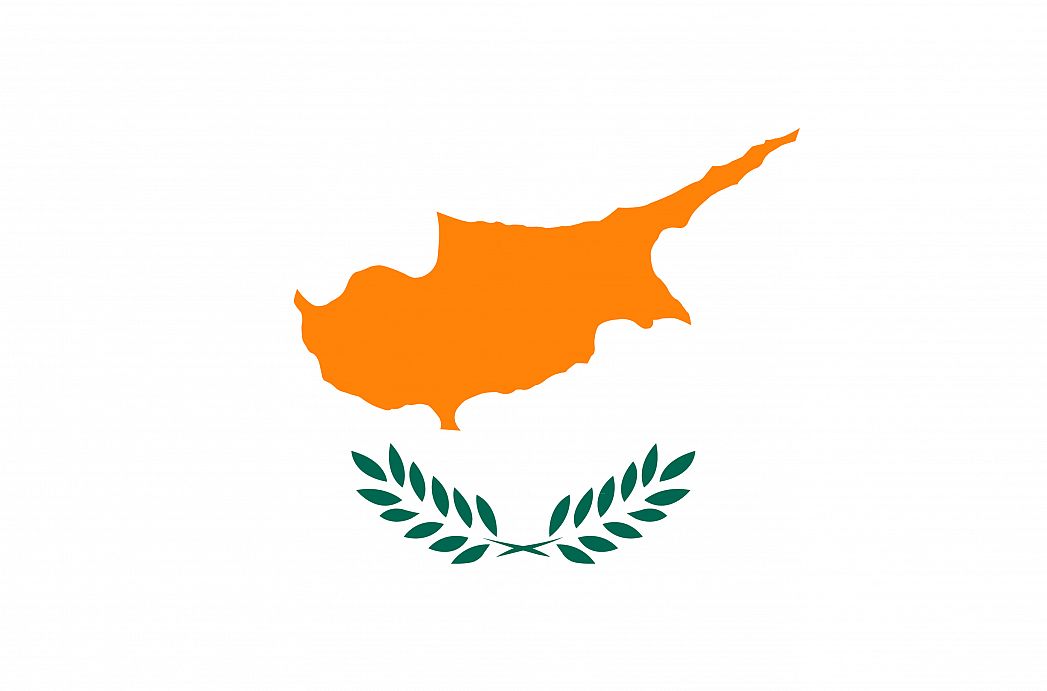The flag of Cyprus features a white background with a copper-colored map of the island at the center, and two crossed olive branches at the bottom. Although the original design was officially adopted on August 16, 1960 when the country gained independence from British colonial rule, some minor modifications were made on April 24, 2006.
The map on the flag has a copper color which represents the large deposits of copper on the island. The olive branches are a symbol of peace between the Greek and Turkish communities inhabiting the island. The white background of the flag represents international peace and harmony that the nation must endeavor to preserve.
The Cyprus flag was chosen by the first President of the Republic, Makarios III, with the approval of the then vice president Fazul Kucuk. A national flag design competition had been held across the country. One of the rules of the competition was that the flag should not have either red or blue color, which was the colors of the Turkish flag and the flag of Greece. The second rule was that neither a cross nor a crescent should be portrayed on the flag. All competitors intentionally avoided the use of these four elements in a bid to make the flag “unbiased." Among the many entries that were presented, the flag as we know it today was designed and proposed by Ismet Guney, an art teacher who was also a Turkish Cypriot.
Before the use of the current flag, Cyprus was under British colonial rule. The colonial flag that was used from 1881-1922 was blue with the Union Jack ensemble on the upper left corner and the initials CHC in the center. This flag was modified in 1922 to become a dark blue flag with the Union Jack in the upper left corner and two red lions in the center-right. The flag of Cyprus as we know it today was officially adopted on August 16, 1960 .
This page was last modified on May 1st, 2018
More on Graphicmaps

Published on 2019-11-06
What is a Trade Embargo?

Published on 2019-11-04
Which Two Countries Used to Have the Same Flag?

Published on 2019-09-16
What Is the Only Two-Sided State Flag?

Published on 2019-09-16
Which Country Flag Looks Like the Texas Flag?

Published on 2019-08-29
Flags That Resemble the US Flag

Published on 2019-08-20
